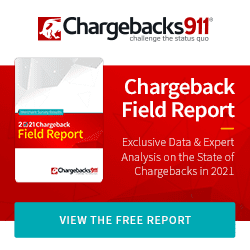
2020 was a challenging year for payments. Even those businesses which were not directly impacted by shutdowns, such as in the eCommerce space, faced extraordinary challenges like rapid scaling and shifts in consumer behavior.
Despite all the upheaval, there were some points of consistency in the market—for better or worse. We see this reflected in the new 2021 Chargeback Field Report published by Chargebacks911. The report asked merchants in a variety of industries to offer up their impression of the current state of chargebacks. The responses were not especially encouraging, at least not at first glance.
Respondents noted a definite uptick in criminal fraud and friendly fraud activity between 2018 and 2021, with the average merchant reporting a 23% increase in friendly fraud chargebacks. Of course, it’s difficult for merchants to segment out friendly fraud as a distinct chargeback source on their own. This means the actual figure may be much higher than some realize.
Although we can trace the upward trend in chargeback activity back more than a decade, Covid-19 clearly aggravated the situation. Sudden changes to consumer behavior, with many buyers shifting to card-not-present channels, translated to greater chargeback risk. Among respondents who reported a change in chargeback issuances resulting from Covid-19 specifically, the average answer indicated an increase of 25%.
It’s true that things are getting back to some semblance of normal as vaccination rates rise; 12% of the world’s population is now vaccinated as of this writing. That said, we can expect the impact of the virus to linger through the rest of 2021, at least.
When asked about their top areas of focus for 2021, merchants overwhelmingly cited their Covid-19 response at the number one choice. Covid-19 is going to be with us for some time, which is probably why 54% of respondents said they had a pessimistic outlook for the rest of 2021.
If there is a silver lining to the report, it’s the fact that merchants have numerous opportunities available to optimize practices. Managing friendly fraud, for instance, stood out at as an opportunity for a significant number of respondents.
90% of merchants said that abuse of the chargeback process by cardholders was a leading concern for their business. At the same time, less than one-third of merchants described their current efforts at managing friendly fraud as “effective.” One of the key shortcomings here appeared to be in chargeback representment.
Representment is an important tactic in every merchant’s arsenal. This process allows them to “re-present” transactions to the issuer, accompanied by compelling evidence, to hopefully overturn invalid disputes. The merchant still loses revenue due to the non-refundable chargeback fee, and each chargeback negatively impacts the merchant’s chargeback ratio, which carries long-term consequences. However, the chance to recover a sale should not be overlooked.
The Chargeback Field Report found that merchants attempt representment in 43% of cases. However, their net win rate, or the rate at they submit a representment which is accepted by the issuer without a pre-arbitration, stands at just 12%.
We know that a substantial number of disputes should be subject to representment. Internal data from Chargebacks911 suggests that, by 2023, approximately 61% of all chargebacks filed will be the product of friendly fraud. The problem is that merchants lack the data insight needed to drill down, identify chargebacks by their authentic sources, and fight back.
Even merchants who take chargebacks seriously are fighting an uphill battle. They lack the capacity for the in-depth data insight necessary to draw useful conclusions about chargebacks. In many cases, they end up allocating resources to other areas, while genuine chargeback sources go unaddressed.
A merchant may suspect friendly fraud is responsible for a significant portion of their chargebacks. Without that crucial insight, though, they could have no way to prove it. The result: friendly fraud goes unchecked, translating to billions of dollars in losses each year.
This begs several questions. What can merchants do to protect themselves? How can the payments industry at large address the chargeback problem?
For merchants, chargeback alerts may be a helpful first step. Alerts give merchants notice of pending disputes, allowing them to provide a refund and avoid the potential chargeback. There are also network inquiry programs offered through Visa and Mastercard which provide similar functions. The Chargeback Field Report found that merchants who used alerts saw a 19% reduction in chargebacks, while those who used network inquiries reported another 17% reduction.
These can be useful stop-gap measures. However, managing chargeback risk requires a much broader approach. In addition to standard tools used to verify buyers, including Address Verification Service (AVS), 3-D Secure 2.0 technology, and geolocation, merchants must adopt best practices to optimize the customer experience.
Looking beyond the individual merchant experience, it’s clear that we need greater collaboration between parties in the payments space. Financial institutions and the card schemes view the chargeback process from an entirely different perspective compared to merchants. By facilitating communication between parties, we may be able to foster a better understanding of the merchant’s situation.
Groups such as the Payments Association can play a role here. By positioning themselves to foster dialogue between parties, these industry groups can allow stakeholders to share their experiences and, hopefully, work toward a better environment for everyone.
The experiences endured through 2020 and the first months of 2021 are unprecedented. That doesn’t change anything about the underlying issues in the payments space that predated Covid-19, though. As we try to work our way back to “normal,” we should take this as an opportunity to examine chargeback protocols and begin the process of transforming them.







Log in to access complimentary passes or discounts and access exclusive content as part of your membership. An auto-login link will be sent directly to your email.
We use an auto-login link to ensure optimum security for your members hub. Simply enter your professional work e-mail address into the input area and you’ll receive a link to directly access your account.
Instead of using passwords, we e-mail you a link to log in to the site. This allows us to automatically verify you and apply member benefits based on your e-mail domain name.
Please click the button below which relates to the issue you’re having.
Sometimes our e-mails end up in spam. Make sure to check your spam folder for e-mails from The Payments Association
Most modern e-mail clients now separate e-mails into different tabs. For example, Outlook has an “Other” tab, and Gmail has tabs for different types of e-mails, such as promotional.
For security reasons the link will expire after 60 minutes. Try submitting the login form again and wait a few seconds for the e-mail to arrive.
The link will only work one time – once it’s been clicked, the link won’t log you in again. Instead, you’ll need to go back to the login screen and generate a new link.
Make sure you’re clicking the link on the most recent e-mail that’s been sent to you. We recommend deleting the e-mail once you’ve clicked the link.
Some security systems will automatically click on links in e-mails to check for phishing, malware, viruses and other malicious threats. If these have been clicked, it won’t work when you try to click on the link.
For security reasons, e-mail address changes can only be complete by your Member Engagement Manager. Please contact the team directly for further help.